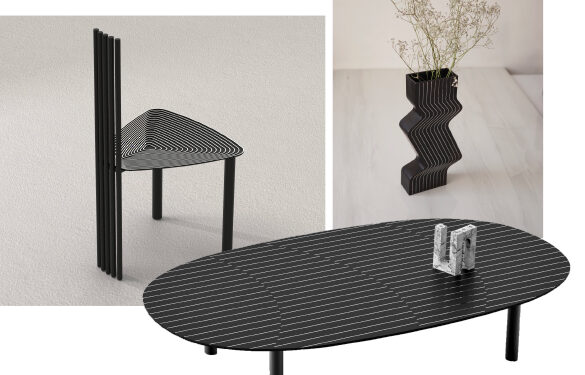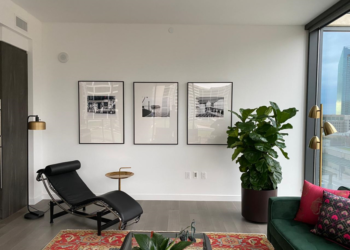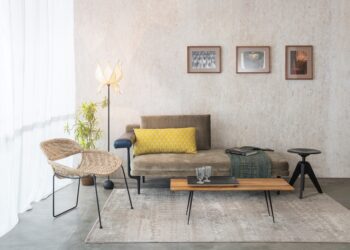Indian crafts keep up with global aesthetics in a jugalbandi of the old and the new, the modern and the traditional. We take a look at designers who are making them relevant in modern homes across the world
By MALATI KALAPUR
The writer is a Bengaluru-based freelance journalist and content consultant. Formerly with the Times of India, Economic Times and Livingetc
India, she writes primarily on design, art and lifestyle. She also enjoys giving a healthy twist to various cuisines.
India’s diverse ancient arts, crafts, design and architecture have inspired the world for centuries with its rich and ornate tradition. As urban and international sensibilities permeate Indian lifestyle and thought, our design too has begun to embrace a new contemporary parlance, and
the buzzwords of good design – green, sustainable and functional – have entered our lexicon.
When India opened up its economy in the 1990s, it gave rise to a new generation of Indians who travelled, studied and worked abroad. The movement of people brought a movement of ideas that helped evolve Indian interior and product design, allowing it to come out of its clichéd image of being overly colourful, ornate and grand. This does not necessarily mean Indian design is in conflict with its traditional roots. On the
contrary, the timeless crafts and handmaking skills remain inherent but with a newfound respect for crafts that has led to reinterpretations to suit a new visual vocabulary and function.
A slew of young designers, many of whom have studied abroad, are reinventing a contemporary language that brings forward the ancient traditions into the 21st century but is both sophisticated and functional. Designers like Ayush Kasliwal of AKFD fly the flag for India’s time-old crafts with authentic designs that gel with the modern milieu, while ensuring a continuum between the old and the new.
SAIF FAIZAL: ANCIENT ARTISTRY
IN MODERN DECOR
Saif Faizal, a trained architect with a passion for automotive racing and design, and an award-winning designer, employs the 700-year-old Bidri technique where exquisitely crafted furniture and décor strike a balance between tradition and cutting-edge innovation in keeping up with
modern sophistication.
“What drew me to this age-old craft was a conversation I had with Spanish designer and architect Patricia Urquiola in 2015 in Delhi, about the interaction of traditional crafts and contemporary design,” says Faizal. “There is a huge lack of innovation that is essential for the successful transition of these skills in the modern world. I wanted to explore and bridge this gap.”
A part of Formula Student racing for five years, he brings the same precision and elemental approach from the experience to his creative process, making what he terms “essential, but not necessarily minimal, design”. His nature-inspired series, Snowflakes, Waves, etc., engrave designs inlaid with copper and silver on charcoalblack oxidised alloy. Sparkling dots, linear patterns, shifting waves, and geometric patterns, say, on a chair or the Katha Ripple vase, could sit comfortably in any contemporary home.
“The old techniques were inadequate to achieve this inlay work of lines in poetry that required special tooling to help the artisan achieve the perfect results. I’ve been fortunate to collaborate with master craftsman M.A. Rauf and his son, M.A. Bari. They have been very willing to explore and experiment with us,” says the designer, whose forte includes product design, furniture, lighting, architecture, interiors, motorcycle design, and jewellery.“ Tracing back to a long lineage of expert craftsmen, M A Rauf has played a quintessential role in elevating Bidriware into a contemporary art form without compromising on the traditional and cultural relevance of the craft. “The Bidri craft has tremendous potential,
though there is a damaging trend of overexploiting it with mediocre and boring design, especially by those who have little clue about its traditions.”
TIIPOI: MAKING CRAFTS FUNCTIONAL
Designer Spandana Gopal, who founded Tiipoi, a product design studio in London, to challenge the stereotypical narratives around Indian design, says, “Particularly the nostalgia shrouded around Indian crafts, whereby value could only be generated by repeating the past, and ‘maintaining’ craft traditions. We want to prove that artisanal products can be more than mere souvenirs. They can be everyday, functional pieces.”
Tiipoi products, made at a workshop in Bengaluru, espouse clean and sustainable designs employing indigenous materials that can be used by households anywhere in the world. The handmade, sustainable and functional Ayasa pourer in brass or copper, for example, celebrates the ‘rim or lip’ feature typical of Indian design with an extended rim, making it a wonderfully no-drip utensil.
ELLEMENTRY: BRANDS ON THE CRAFTS WAGON
India has been the leading exporter of handicrafts, which continued to grow through the pandemic, according to the Economic Times. Quality handcrafted products have, unfortunately, not been a part of everyday life in modern India. This, however, has changed in recent years with
the proliferation of e-commerce platforms, and studio products now available to discerning customers.
Ayush Baid, the son of award-winning
Indian handicraft products exporter Dileep Baid, founded Ellementry to retail products that carried the same sensibility that endeared them to an international audience. With sustainability, minimalistic design and contemporary flair at their core, Ellementry’s handmade products bring indigenous craftsmanship to Indian homes.
“We take on the role of design messiah and liberate the customer from having to choose between beauty and function, when it comes
to hand-made products,” says Baid.
NO-MAD: INSPIRED BY EVERYDAY INDIA
Brave new Indian designs poised between tradition and modernity look beyond the borders for inspiration. No-Mad 97 % India celebrates the Indian way of life by adding a twist to its local and ancestral traditions. The emphasis on ‘97 percent India’ suggests the external influences brought in by travel and exposure in a globalised environment.
“Every No-Mad product tells a story, the story of India,” says Anuj Kothari, the founder, who wanted to embark on a creative endeavour where his love for art, crafts and travel would come together to breathe quality into everyday life. “We are inspired by everyday India. Simple everyday items are what inspire us, be it the humble muddah stool or the thali tray found in practically every household. These are hand-strung by cane furniture makers, while the ties on our cushions are made by patwas who string beads for jewellery. Traditional crafts and artisans are at the heart of No-Mad’s contemporary products.
I would say we are a perfect mix of modern technology and traditional crafts. Using diverse techniques like screen and block printing, hand and machine embroidery, each item passes through several hands.”
For pravasi Indians, these are the best of times, as they straddle a life across continents. Indian design speaks to their soul and allows them to stay rooted even as they blaze trails across the globe.
@malati03 @spandanagopal @anujkothari @dilipbaid @ayushbaid @saiffaizal








